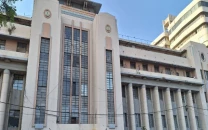The rise of the Pakistani middle class: How new suburbs made the good life affordable
Pakistan’s large cities are increasingly developing outer rings of suburbs which are cheaper than the city centre.

The rise of the Pakistani middle class: How new suburbs made the good life affordable
The decision by Abdul Manan Shaikh’s family to move to Gulshan-e-Hadeed 10 years ago marked the beginning of his upward social mobility. Hailing from Larkana, where he learned the English alphabet at a government-run ‘taat’ school in sixth grade at an annual fee of less than Rs50, Shaikh has since attended three elite business schools of Karachi in the past decade.
Although he now drives a company car to a textile mill located in SITE every day, and attends evening classes at a business school in Clifton on weekends, he does not want to move out of Gulshan-e-Hadeed. In fact, his family bought a modest house there just three years ago.
So what makes Shaikh stay in a place as far removed from Karachi’s city centre as Gulshan-e-Hadeed?
Affordability
Real estate in Gulshan-e-Hadeed is affordable. A 120-squareyard independent housing unit with a lounge, drawing room and two bedrooms with attached bathrooms costs somewhere around Rs2.5 million. Similarly, 240- and 500-squareyard housing units are available for around Rs5 million and Rs6.5 million, respectively.
The average monthly rent for a 120-squareyard, single-unit house in Gulshan-e-Hadeed is between Rs4,000 and Rs6,000. Compared with other middle-class areas of Karachi, that rate is cheap.
Moreover, an improvement in the city’s inner highways means that it takes almost the same time from these areas to go to the centre of the city. Gulshan-e-Hadeed may be a remote place in terms of kilometres, but an easy drive through National Highway and Sharae-Faisal makes it a choice neighbourhood for mid-level corporate managers, like Shaikh, who have company cars and receive subsidised fuel.
Peaceful and suburban
Although Gulshan-e-Hadeed is 48 kilometres from SITE, and 42 kilometres from Clifton, it offers what many localities closer to the centre of the city do not: better security.
Gulshan-e-Hadeed connects to the main city through National Highway and Shahrah-e-Faisal. Even during the worst law and order situations, one can expect these two roads to stay clear of trouble. Moreover, the ethnic and religious harmony within Gulshan-e-Hadeed, thanks to a heterogeneous population mix, has kept the crime rate under control for years.
Infrastructure
Gulshan-e-Hadeed has two residential phases. Property is expensive in Phase I, as it is one of the few areas of Karachi whose residents do not face any power outages. No load-shedding takes place in Gulshan-e-Hadeed Phase I, because its power supply is connected with Pakistan Steel Mills, the largest steel mill of Pakistan located 10 kilometres to the south.
All streets in Gulshan-e-Hadeed are paved and have ample space to park vehicles. There are no slums. Public transport is easily available, as buses leave for Karachi’s financial district every two to three minutes for the most part of the day.
Other than several degree colleges offering a decent standard of education, Gulshan-e-Hadeed is dotted with both government and private schools, including a cadet college and a branch of Beaconhouse School System in the adjoining Steel Town.
“A school, mosque and market are always at a walking distance from your home no matter which street of Gulshan-e-Hadeed you live on,” a local real estate dealer told The Express Tribune. “How many localities in Karachi offer that kind of closeness to these places?”
A rising trend
The real estate agent’s question is rhetorical. The fact that is that many of Pakistan’s largest cities now have similar suburban areas, which are in many ways similar to the Levittowns that sprouted around the United States after the World War II. Pakistan’s middle class has grown rapidly, and this is where many of them increasingly live.
Indeed, many of the villages that used to surround cities in Punjab’s GT Road belt have since turned into suburbs, no longer truly rural and offering an affordable option of the good life to many of the Pakistan’s up-and-comers. Indeed, these areas are acquiring a character of their own.
The place to be
Gulshan-e-Hadeed might have been a stopover in Shaikh’s initial plans to rise through the socio-economic ranks. But not anymore. He has built two storeys over the original, company-built 120-squareyard house his family bought three years ago. Shaikh plans to raise a family in Gulshan-e-Hadeed after completing his PhD in management sciences.
Published in The Express Tribune, January 9th, 2012.



















COMMENTS
Comments are moderated and generally will be posted if they are on-topic and not abusive.
For more information, please see our Comments FAQ